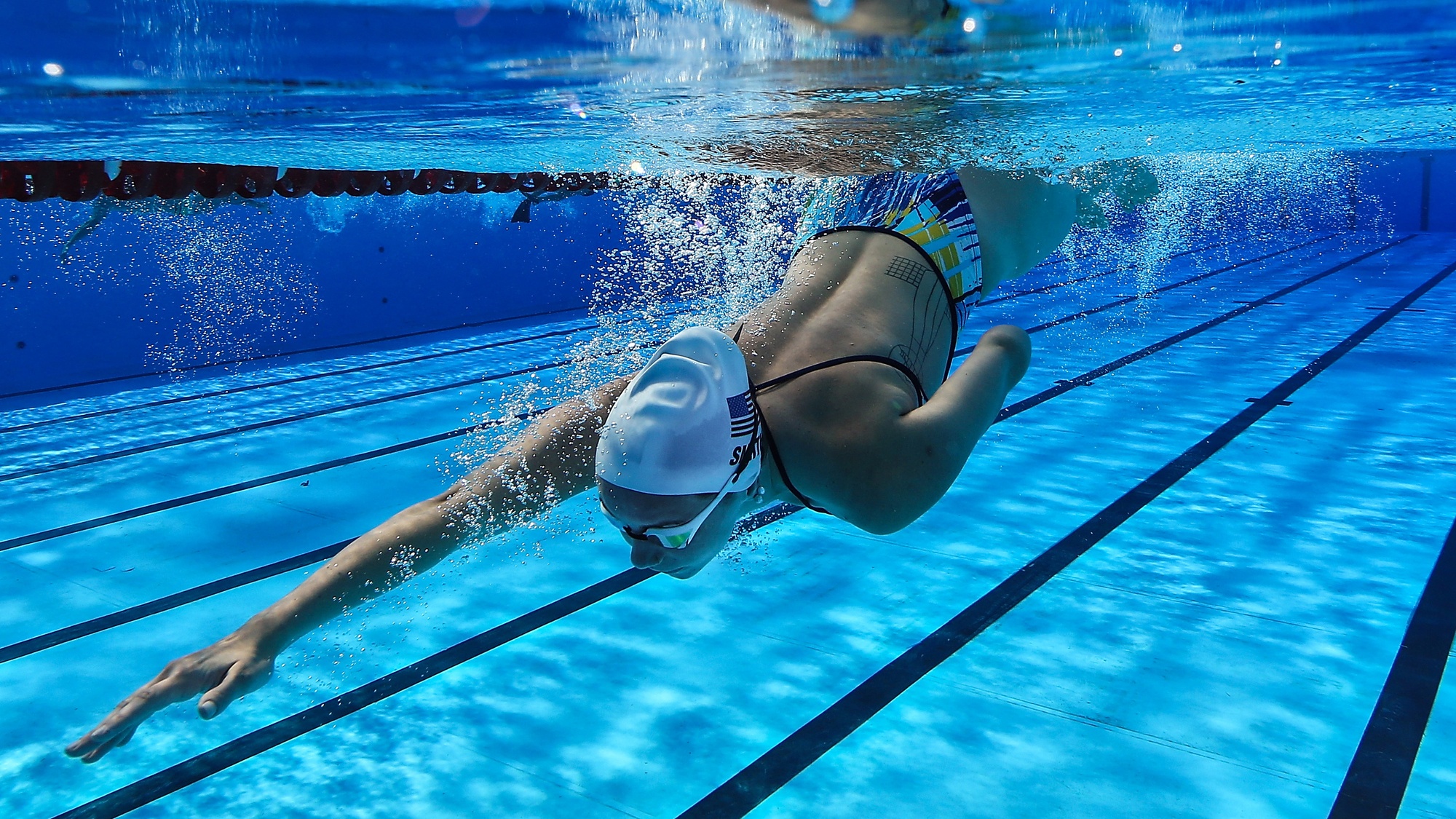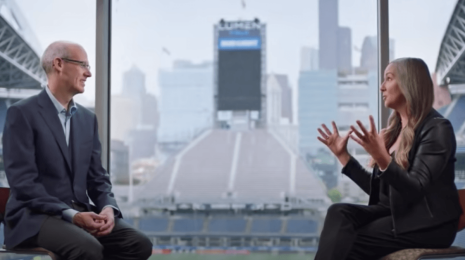Data-powered excellence: US Paralympian Lizzi Smith breaks barriers—and records

Team USA athlete Lizzi Smith at the Paralympic Games Rio 2016 (photo credit: Getty Images)
Data stops doubt
Paralympian Lizzi Smith is stoked about swimming, and leans into data as a way to improve her results.
“Data stops doubt,” explains Lizzi. “As an athlete, you can’t blindly trust the process.” Lizzi uses a number of metrics to understand her performance, create training benchmarks, and set goals. “I have a test set each week of broad jumps and I’ve been measuring those for the past three years.” Lizzi can plan her training strategy based on each week’s results. “When I started off jumping, my PR was 74 inches. And now I’m jumping 96.”
Data stops doubt.
With her jumping data, Lizzi knows that “I did get better. I did get stronger. I did get more explosive. That translates to the pool. It gives you so much more confidence diving into the water. Now you just need to go. Now you’re allowed to turn your mind off and let your body do what it knows how to do, what it’s done so many times before.”
Other metrics that matter to Lizzi are tracking sleep cycles, and measuring the efficiency and power in her stroke. Using a velocity meter, she can determine how many meters she travels per kick, or how much propulsion she’s getting from each arm. The data helps her make nuanced adjustments to her stroke, such as kicking harder, or kicking harder with her opposite leg.
A closer look at the Paralympic Games classification system
The Paralympic Games classification system is built on comprehensive data analytics about the athletes, and is foundational to the entire Paralympic Movement. Lizzi swims for Team USA and is classified as an S9 within the para-swimming classification system. Freestyle, butterfly, and backstroke swimmers are classified based on degrees of functional ability from S1 (most severely affected) to S10 (the least severely affected). The system provides a way for athletes to compete with others who share similar physical or cognitive disabilities. There are also classifications specific to breaststroke and medley events. “They’re always working on trying to make the classification system more and more accurate.” Lizzi points out.
Dreaming big
As an athlete who learned at an early age that there is special freedom in the water, Lizzi also found that swimming provided an environment where she did not feel different.
“I was born with amniotic band syndrome,” LIzzi explains. “I was very aware that I looked different, and people treated me differently. I felt the stares all the time. When I was swimming, it was the first place that I could pursue something I really loved and not feel overwhelmed.”
After seeing her swimming heroes—including her present coach, Ian Crocker—in the ’08 Olympic and Paralympic Games, Lizzi dreamt of competing at a world-class level.
“That’s what it became. My dream, and my goal in life. I just had to go to the Paralympics.”
Lizzi Smith by the numbers
Birthplace: Muncie, Indiana
Hometown: Austin, Texas DOB: June 26, 1996
Birth order: Seventh of eight children
Began swimming: 7 years old Events: 100m Freestyle, 100m Backstroke, 100m Butterfly, 200m IM
Signature event: 100m Butterfly
National records: 22
Paralympic experience: Paralympic Games Rio 2016 ; one silver and one bronze medal
World championship experience: 2013, 2015, 2019; six medals total; 2 silver, 4 bronze
Seeing Team USA in a whole new way
As Lizzi sees it, perceptions of disability and what’s possible are changing for the better. “We’re inching closer and closer to bridging the gap. We are changing the whole perception, like this perceived limitation. We’re breaking those barriers.” Lizzi continues, “Disability is not a bad word. People can definitely say disability and call it a disability, but disability does not equal weakness.”
Fans have an opportunity to learn more about these remarkable Paralympians by exploring Team USA by the Numbers, an interactive visualization featuring interesting data points about the team.
The viz gives you a high-level view of the different events, how many athletes are on each event team, their home states, schools, and more. With filtering options, it’s easy to explore the data further, and make your own analyses.
“It's fascinating utilizing the viz to see data on the best of the best athletes across all the Olympic and Paralympic sports,” Lizzi remarks. “The data viz is such a cool interactive way to gain more insight on the other athletes that I'll be alongside while representing Team USA in Tokyo.”
It’s go time!
Lizzi Smith will soon put her hard work and training to the test as she competes on one of the world’s biggest stages—but win or lose, her attitude is solid gold. “Winning does feel great but changing the narrative is a big thing that makes it worth it. Being part of something bigger than yourself. That's the coolest part, whether I'm a representative of disabilities—any disabilities—or Team USA. That's so many people's dreams to be able to get to do that.”
Be sure to check out the viz, and connect with Lizzi on Instagram and TikTok.






